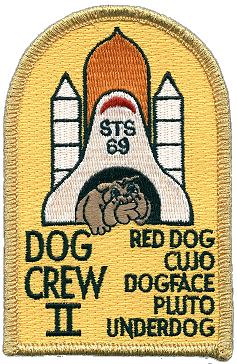Chris Peterson wrote:
There is no evidence that globular clusters can still form. The formation of both globulars and galaxies are somehow related, and both apparently required conditions found in the early Universe which no longer exist.
Whether or not globular clusters can still form partly depends on how we define "globular clusters" in the first place. Very many of the old, classic globular clusters must have been extremely large and massive when they formed, but it is quite possible that some of them were not so massive.
At left you can see two globular clusters that are located close together in the sky, but it is only too obvious that one of them (
M53) is much more massive than the other one (
NGC 5053). It seems likely to me that these globulars were born unequal, and that NGC 5053 may never have been
extremely massive.
Hodge's Cluster in NGC 6946. Source: Hubble/Keck/ S.Larsen?
Yes, but now check out young massive Hodge's Cluster in
NGC 6946.
Yu.N.Efremov, V.L.Afanasiev, E.J.Alfaro, R.Boomsma, N.Bastian,
S. Larsen, M.C.Sánchez-Gil, O.K.Silchenko, B.García-Lorenzo, C.Muñoz-Tuñon, and P.W.Hodge wrote about Hodge' Cluster:
Its photometric and dynamical masses were also estimated from these observations; both estimations provide similar values close to 10
6 solar masses. It was possible therefore to suggest that the cluster is gravitationally bound and that
it resembles a young globular cluster, eventually to evolve into an old classical globular cluster. Its parameters fit those for giant young compact clusters, often
called super star clusters (SSC).
NGC 3293, a massive young cluster.
Photo: ESO/G. Beccari
I agree that young super star clusters (SSCs) are not identical to "classic" globular clusters, partly because extremely few SSCs were born as massive as the classic 10-12 billion-year-old globular clusters, and also because the young SSCs are not as metal-poor as classic globulars. But Chris points out an interesting possibility - perhaps the "true" globular clusters are the by-products of an early evolutionary phase of galaxy formation in the young universe. If so, no more globulars can ever form again, by definition. However, massive young clusters
can still form.
No globular cluster-like clusters - and no clusters similar to Hodge's Cluster - can be found in the Carina Nebula, and there are no signs of anything nearly so massive forming there. The most massive-
looking cluster in the area is
NGC 3293, which is the extended blue object near the bottom of today's APOD. But NGC 3293 is a far cry from being a globular cluster.
EDIT: NGC 3293 is apparently "top-heavy", and therefore even less massive than it appears to be. See
here and
here.
Ann
 The Great Nebula in Carina
The Great Nebula in Carina






